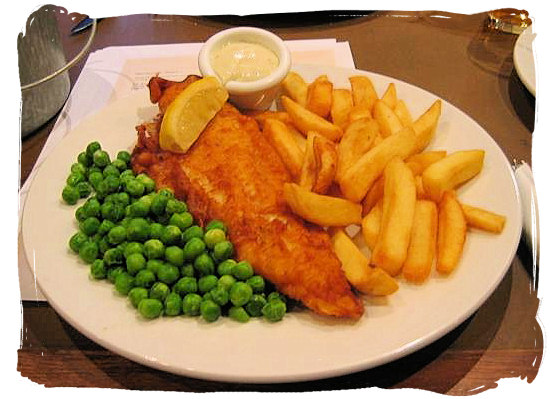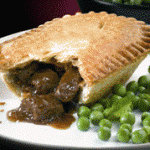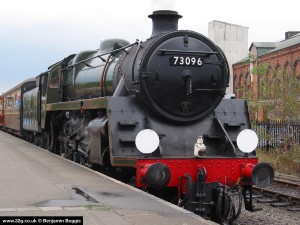This article is written by Cyrus Dadachanji, an avid food journalist, storyteller, non-fiction film and TV scriptwriter, researcher, advertising copywriter and poet, based in Mumbai
If you thought dining out in London meant eating Fish ‘n’ Chips, you’re in for the surprise of your life!
Welcome to London. A bustling, throbbing megapolis that is a delight for the senses in every sense of the word. If you love food, this is the city of your dreams. Name any cuisine and you’ll find it here. Not surprpising that the humble Indian Chikken Tikka has been voted as the most popular dish in Britain. That in itself says a lot for the adventurous nature of the British palate, tired of being brought up on a diet of bland roasted food. The new mantra in London seems to be… the more exotic the better. And restauraunteers have taken traditonal British hospitality to its logical end, falling over backwards to cater to these newly evolved tastebuds. So, let’s go on a gastronomical tour de force of London’s restaurants, one cuisine at a time.
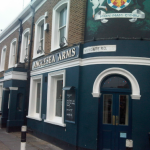 When in Britain… well if you followed that dictum, you’d probably end up eating almost everything except British food. However, food represents the nature of a country and its people, lets tuck in to a little Brit grub, to begin with. Britain lives in its pubs and that’s where you’ll nvariably find the best pub grub. Check out The Anglesea Arms near the Ravenscourt Park tube station. This is one of the few pubs to have a Michelin star (which is the highest rating for resaturants in Britain). You can have a good meal for around 12 – 15 £. With dishes like calves’ liver, which melts in the mouth, the food is nothing short of adventurous and consistently good. Try having two starters instead of a main course and you’ll never be disappointed. Not for nothing has the Anglesea Arms has been voted s one of the best Value for Money establishments in the city. If you’re in the mood for some excellent roast duck, drop in at The Chiswick, near the Turnham Green Tube station. It’s a modern sort of restaurant with a pleasant amibience and an excellent selection of of new world wines, making it the perfect place to sup one evening.
When in Britain… well if you followed that dictum, you’d probably end up eating almost everything except British food. However, food represents the nature of a country and its people, lets tuck in to a little Brit grub, to begin with. Britain lives in its pubs and that’s where you’ll nvariably find the best pub grub. Check out The Anglesea Arms near the Ravenscourt Park tube station. This is one of the few pubs to have a Michelin star (which is the highest rating for resaturants in Britain). You can have a good meal for around 12 – 15 £. With dishes like calves’ liver, which melts in the mouth, the food is nothing short of adventurous and consistently good. Try having two starters instead of a main course and you’ll never be disappointed. Not for nothing has the Anglesea Arms has been voted s one of the best Value for Money establishments in the city. If you’re in the mood for some excellent roast duck, drop in at The Chiswick, near the Turnham Green Tube station. It’s a modern sort of restaurant with a pleasant amibience and an excellent selection of of new world wines, making it the perfect place to sup one evening.
 While Mackintosh’s near Turnham Green station is a great place to take the kids along Try their Eggs Benedict and Curried Potatoes for a hearty Sunday Brunch. You can give the kids bowls of pasta to mess around with – and the restaurant stocks crayons so they can draw on the paper tablecloths! Stick to the food here and the ales; don’t experiment with the cocktails. Of course, in most British resturants, you’ll find the typical pot roast, steak and kidney pie and the ever popular fish ‘n’ chips or kippers (mackerel)… but there are many more culinary delicacies waiting to be discovered.
While Mackintosh’s near Turnham Green station is a great place to take the kids along Try their Eggs Benedict and Curried Potatoes for a hearty Sunday Brunch. You can give the kids bowls of pasta to mess around with – and the restaurant stocks crayons so they can draw on the paper tablecloths! Stick to the food here and the ales; don’t experiment with the cocktails. Of course, in most British resturants, you’ll find the typical pot roast, steak and kidney pie and the ever popular fish ‘n’ chips or kippers (mackerel)… but there are many more culinary delicacies waiting to be discovered.
“The nice thing about dining out in London however is that there are restaurants to suit every budget, even among what may be called speciality resturants.”
For those who like their food lightly flavoured, with a hint of herbs, London has a fine selection of European and French restaurants. The nice thing about dining out in London however is that there are restaurants to suit every budget, even among what may be called speciality resturants. What’s more, most resturants, especially the Continental ones create an ambience of sophistication, blended with authentic décor. So tuck in your serviettes messeieurs and take a seat, while the aromas of Europe tease you and the food tittilates your tastebuds. But be sure to book a table well in advance, for some exclusive restaurants have a 6 week waiting list!
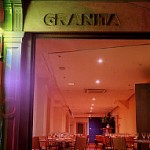 Granita, near Angel Tube Station all the makings of a terrific restaurant. The ambience is perfect, the service, impeccable and the food, simply divine. A mouth watering menu is backed up by perfect service. If you’re a vegetarian and wondering wheteher you should step in, there’s a good range of vegetarian dishes that are equally inspiring. But just make sure you call up and book a table, because Granita is very popular with the people in the neighbourhood.
Granita, near Angel Tube Station all the makings of a terrific restaurant. The ambience is perfect, the service, impeccable and the food, simply divine. A mouth watering menu is backed up by perfect service. If you’re a vegetarian and wondering wheteher you should step in, there’s a good range of vegetarian dishes that are equally inspiring. But just make sure you call up and book a table, because Granita is very popular with the people in the neighbourhood.
Step out of London proper to the neigbouring borough of Kent and you can dine under the stars, with a gurgling brook serenading you as you tuck into your meal. Welcome to the Haxted Riverside Brasserie near Haxted, Edenbridge (main line). Few restaurants can beat the Brasserie in terms of ambience, service and the quality of the food served here. What’s more, the locale and the climate give your appetite the boost it will need to knock off the huge portions. Back in the city, The Abingdon is a trendy bar and restaurant nestled behind Kensinghton High street. The bar is spacious with seating at round tables and the ideal place for a drink if your table is not ready. The restaurant has quiet booths which are very comfortable and intimate, but still alow you to see what’s going on around you. The menu changes regularly, so you never know what you may find on your nextt visit. For starters, try the mussels mariniere and carpaccio of beef with a walnut dressing. The Abingdon has an exotic menu which includes Grilled noisettes of lamb with mustard sauce, brochette of scallops and squid with lemon tagliatelle and rabbit pie. They have a lemon creme brulee and rice pudding with berry compote on the desert list and both are simply out of this world… as is most of the food served here. So, if you’d like to taste European food, as it really should be cooked, the Abingdon is your best bet.
